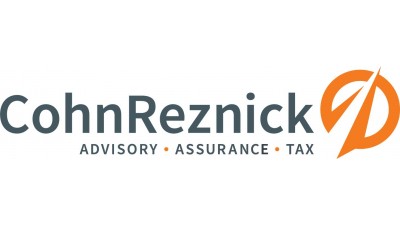6 Tech Strategies CRE Should Adopt In 2018

PropTech entered a golden age in 2017. Technology has reshaped the commercial real estate industry, as professionals turn to online platforms to improve the efficiency of their businesses and to strengthen client relationships. As real estate transactions continue to shift toward an online marketplace, and as data plays a greater role in informing real estate decisions, PropTech will continue to redefine best practices.
From augmented reality to social media, here are six strategies forward-thinking CRE players should adopt in 2018.
1. Leverage augmented and virtual reality
The recent release of Apple’s iOS 11 brought augmented reality capability to its smartphone users. Companies like IKEA have jumped at the opportunity, creating apps that allow shoppers to preview virtual models of furniture in their homes or apartments.
Commercial real estate has also embraced the technology. Companies like Floored, which CBRE acquired earlier this year, allow users to visualize and edit floor plans in 2D and 3D, in addition to creating customized layouts in real time.
2. Utilize automation
Commercial real estate is a people-driven business. Close relationships with clients can often lead to deals. Automation can help to free up time while maintaining those relationships. Email campaigns, newsletters and marketing blasts, for instance, are time-consuming.
Automation has become popular in real estate because it takes common, repetitive tasks and allows them to be scheduled in advance. Brokers can regularly send welcome emails to new clients without ever needing to sit down at a computer. Not only does automation save time, but it can also improve the quality of the content. Additional tools can automatically create a social media advertisement by pulling in copy, images and even a call to action directly from a real estate listing service.

3. Keep an eye on improved analytics
Commercial real estate has relied on data-driven analytics to inform decision-making for years. But a new form of data analysis could provide more nuanced insight. CRE professionals have started to look at unstructured, raw or text-based data. This includes materials like text messages, documents, emails, video, audio and still images already publicly accessible that have yet to be analyzed. Data analytics present a more robust opportunity for insight into commercial real estate activity.
PropTech leaders have started to develop programs that leverage this data. On the residential side, companies like first.io are experimenting with this technology to predict, based on a broker's existing networks, when a homeowner is going to sell before they even list the property.
4. Build a brand on social media outreach
Social media has redefined how people consume and interpret media. Visual platforms like Instagram and Pinterest have created an easy way to view images and engage with a brand. Commercial real estate professionals have looked to use these platforms to highlight properties on a highly shareable platform, allowing users worldwide to engage with their properties.
PropTech players have made platforms specifically tailored to this approach. Compass, dubbed the “Pinterest of real estate,” allows users to organize, collaborate and discuss properties with their agents.

5. Improve cybersecurity
While PropTech has allowed for greater access to CRE information and faster transactions, it has also led to increased cybersecurity risks. Companies need to ensure that user information like bank accounts, Social Security numbers or identification data are protected. According to IBM’s Cost of Data Breach study, 2015’s average consolidated total cost of a data breach was $3.8M, a 23% increase since 2013.
Companies have turned to security measures like multifactor authentication, which creates an additional security step beyond a password. CRE companies managing sensitive data should also look to encrypt their information.
6. Upload data to the cloud
CRE leaders are turning to cloud-based platforms like Google Drive and VTS to allow employees from around the world to access property information anywhere and at any time. In the cloud environment, a provider administers the infrastructure, including automatic network and software updates. Cloud-based services have the potential to cut IT department expenses by up to 30%. Cloud-based services are also scalable, allowing businesses to add subscriptions as needed. Data is consistently backed up and is freed from just one physical device, preventing the loss of information should that device fail.
To learn more about this Bisnow content partner, click here.

